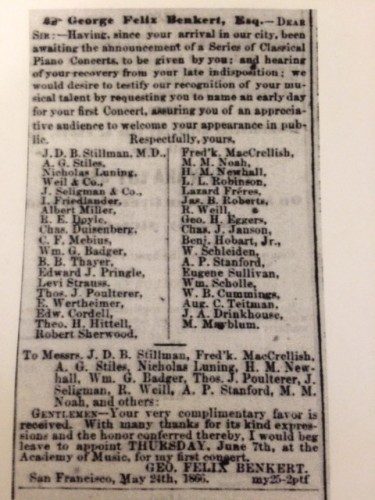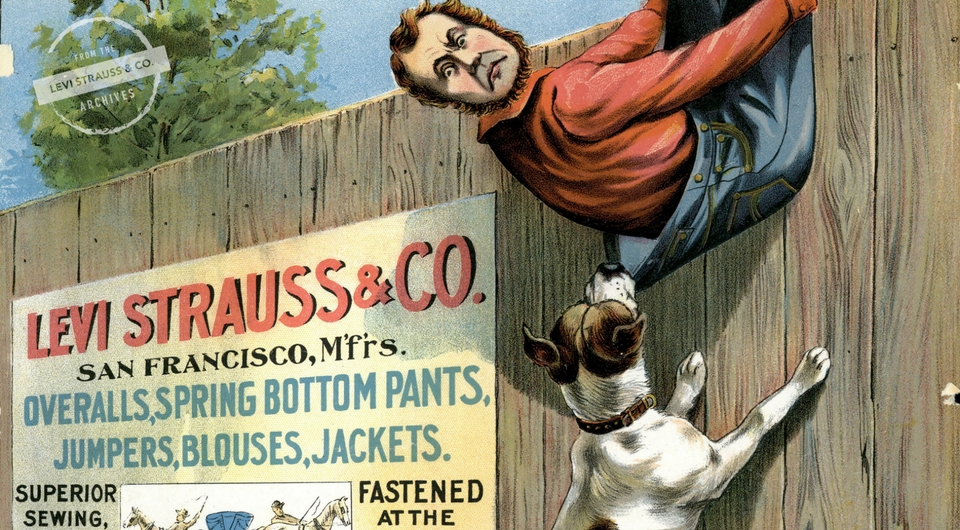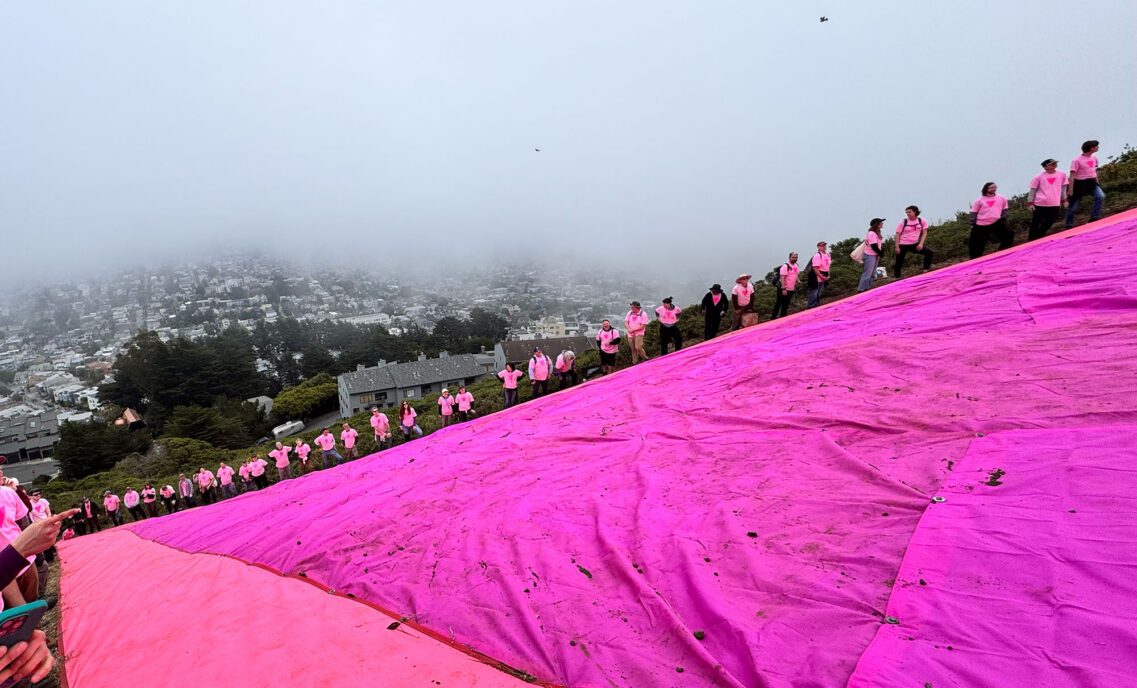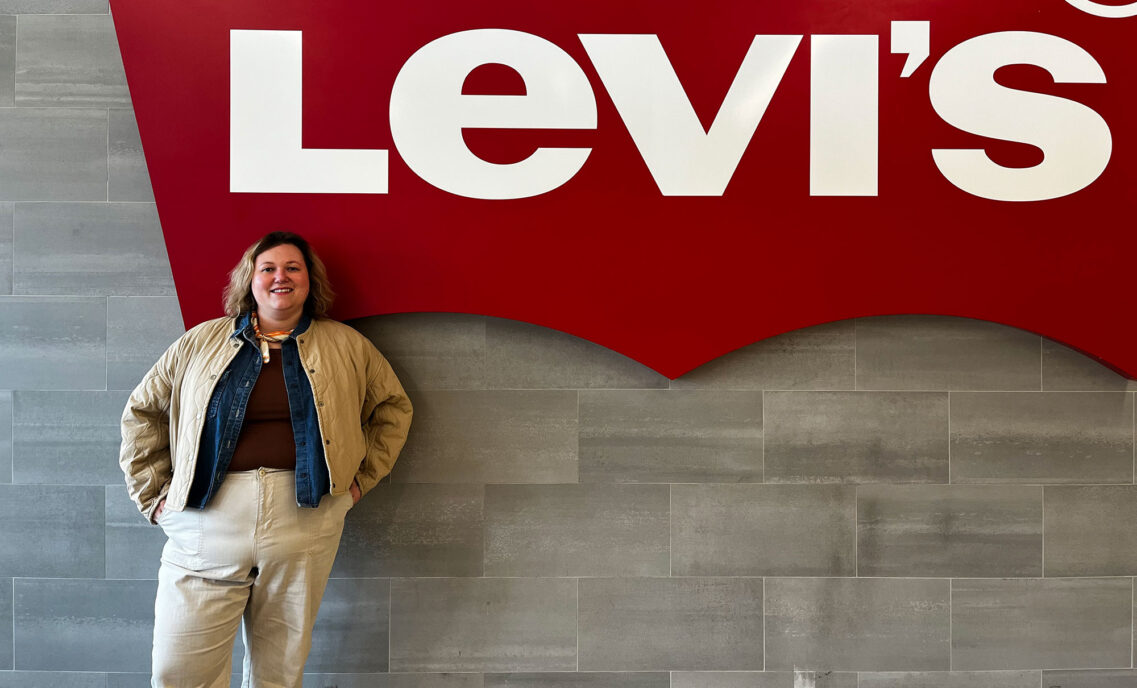Levi Strauss had an indelible impact on the fabric of American culture — so much so that his name became synonymous with the product he made famous.
In recognition of his upcoming birthday, we’re looking back at our founder’s contributions to fashion, and how his unwavering interest in people, community, and culture formed the pillars of our business today.
Did you know…
He valued fire safety before most business owners did.
More than one fire destroyed San Francisco, home of the Levi’s headquarters. That’s why, in 1890, Levi joined several fellow businesses for a public-safety alert on the dangers of fire. It remained such a passion, he left $500 — equivalent to roughly $15,000 today – to the San Francisco Fire Department upon his death in 1902. Lynn Downey, former Levi Strauss & Co. Historian, has all the details.
He also knew the value of education.
In 1897, Levi donated money to the Bay Area’s own University of California, Berkeley. The money, which matched 28 scholarships from the state of California, was enough to cover more than a third of a student’s expenses. The Levi Strauss Scholarship is still awarded today.
He supported the arts in his adopted home city — particularly music.
Thanks to the Gold Rush boon, San Francisco became a lightning rod for artists and performers. Composer George Felix Benkert, who taught “Stars and Stripes Forever” composer John Philip Sousa, was one of them. Benkert was scheduled to give a piano concert in May of 1866 but suddenly fell ill. As he recovered, local businessmen, including Levi Strauss, placed an ad in a local newspaper wishing him well and asking him to reschedule the anticipated show.
Levi was very likely in the audience at the rescheduled show, which took place June 7 at the Academy of Music in San Francisco.
The Levi’s Music Project, which kicked off last year with Alicia Keys, continues this legacy, providing youth worldwide with resources for music education.

The ad, placed by Levi Strauss and fellow business owners, in the Daily Alta California newspaper in May 1866.
Growing up, he shared a 645 square-foot space with eight people.
That would be two adults and seven children total. Levi grew up in the Bavarian city of Buttenheim (his childhood home is now the Levi Strauss Museum) where he lived until 1848, when his family emigrated to America. A true immigrant success story, within a decade after his 1853 arrival in San Francisco, Levi’s new home — which he shared with his sister and her family — was an elegant building in one of the city’s most prosperous neighborhoods.
He had diverse business interests to match a diverse portfolio of personal passions.
Levi wasn’t just in the business of blue jeans, though securing the patent for riveted pants was where he struck gold in the soft-goods market. For example, in 1875, he became a director of the San Fernando Sheep Company, the man office for which was in San Francisco. Historians theorize that it was a way to invest in the early stages of wool production, which was used for both his dry-goods company and some of his riveted products.
Another surprising business venture? Outfitting convicts. From 1875 until 1901, Levi Strauss & Co. had government contracts to supply clothing and dry goods to the California State Prisons at San Quentin and Folsom (made famous by Johnny Cash’s “Folsom Prison Blues”), as well as a facility in Yuma, Arizona. Records show that, in 1898, LS&Co. was awarded a contract to supply striped twill fabric for the quintessential “convict suit.”







